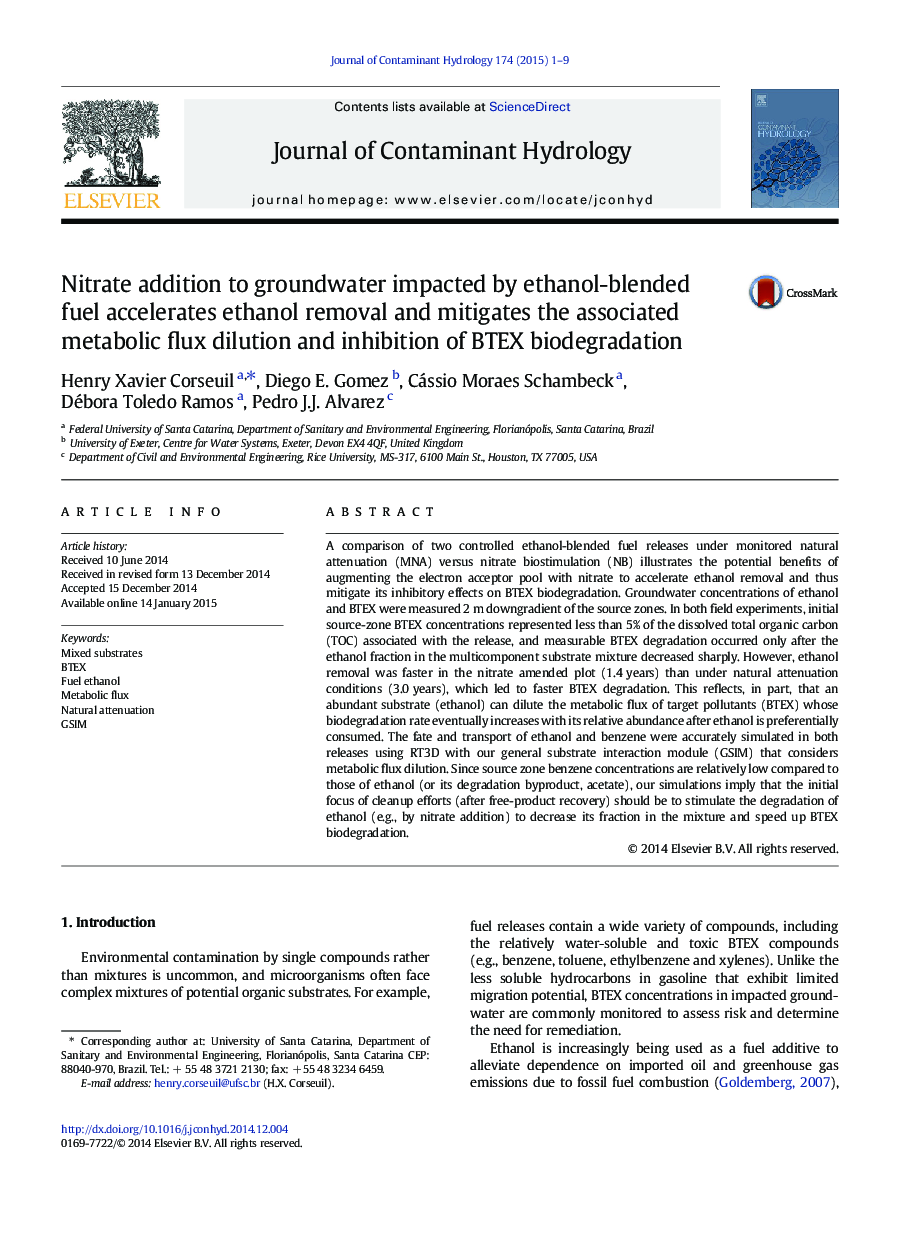| کد مقاله | کد نشریه | سال انتشار | مقاله انگلیسی | نسخه تمام متن |
|---|---|---|---|---|
| 4546468 | 1627034 | 2015 | 9 صفحه PDF | دانلود رایگان |

• The attenuation of two controlled ethanol-blended fuel releases was monitored.
• One release was biostimulated with nitrate as terminal electron acceptor.
• This accelerated removal of ethanol and its inhibitory effect on BTEX degradation
• Preferential ethanol degradation was explained by the metabolic flux dilution model.
• Thus, bioremediation efforts targeting ethanol first would also remove BTEX earlier.
A comparison of two controlled ethanol-blended fuel releases under monitored natural attenuation (MNA) versus nitrate biostimulation (NB) illustrates the potential benefits of augmenting the electron acceptor pool with nitrate to accelerate ethanol removal and thus mitigate its inhibitory effects on BTEX biodegradation. Groundwater concentrations of ethanol and BTEX were measured 2 m downgradient of the source zones. In both field experiments, initial source-zone BTEX concentrations represented less than 5% of the dissolved total organic carbon (TOC) associated with the release, and measurable BTEX degradation occurred only after the ethanol fraction in the multicomponent substrate mixture decreased sharply. However, ethanol removal was faster in the nitrate amended plot (1.4 years) than under natural attenuation conditions (3.0 years), which led to faster BTEX degradation. This reflects, in part, that an abundant substrate (ethanol) can dilute the metabolic flux of target pollutants (BTEX) whose biodegradation rate eventually increases with its relative abundance after ethanol is preferentially consumed. The fate and transport of ethanol and benzene were accurately simulated in both releases using RT3D with our general substrate interaction module (GSIM) that considers metabolic flux dilution. Since source zone benzene concentrations are relatively low compared to those of ethanol (or its degradation byproduct, acetate), our simulations imply that the initial focus of cleanup efforts (after free-product recovery) should be to stimulate the degradation of ethanol (e.g., by nitrate addition) to decrease its fraction in the mixture and speed up BTEX biodegradation.
Journal: Journal of Contaminant Hydrology - Volume 174, March 2015, Pages 1–9